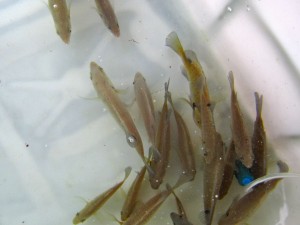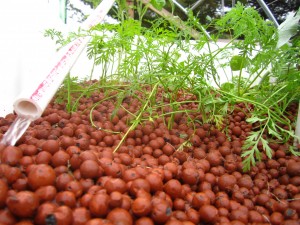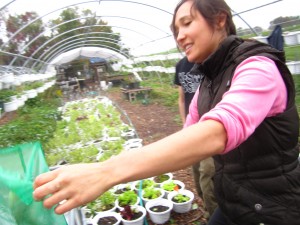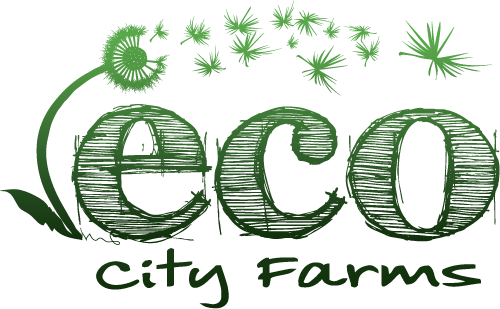Aquaponics: The New Frontier
 Eco City Farms recently received a small aquaponic system as a donation. “What is aquaponics?” you might ask. I asked the same question a year and a half ago.
Eco City Farms recently received a small aquaponic system as a donation. “What is aquaponics?” you might ask. I asked the same question a year and a half ago.
Aquaponics is the combination of aquaculture (farming fish) with hydroponics (growing plants in water). Using this combined farming method, you only need to feed the fish in the system—the plants are actually fed by fish waste, which is converted by bacteria into nitrates, a building block that plants need to grow. This serves a dual purpose—it allows safe recapture of what would be considered “waste” in a fish farm and creates a second food product. It also allows recycling of water that would have been contaminated and disposed of in both aquaculture and hydroponics, by naturally pulling effluent out of the water. In this way, aquaponics is cleaner and greener than both aquaculture and hydroponics.
 The simplest aquaponic designs basically look like a fish tank connected to a tank full of plants suspended in water (sometimes using a rock bed to support them). But, you can scale systems to nearly any size and environment. You can set up aquaponic systems in both urban and rural settings, in tropical temperatures, and in temperate climates like ours. Systems can fit on balconies or in kitchen corners, or be commercial in size, covering part of an acre or more.
The simplest aquaponic designs basically look like a fish tank connected to a tank full of plants suspended in water (sometimes using a rock bed to support them). But, you can scale systems to nearly any size and environment. You can set up aquaponic systems in both urban and rural settings, in tropical temperatures, and in temperate climates like ours. Systems can fit on balconies or in kitchen corners, or be commercial in size, covering part of an acre or more.
Why haven’t you heard of aquaponics before? The concepts of aquaponics were in use at least as early as the Aztec and early Chinese civilizations. Unfortunately, this type of recirculating farm has been largely forgotten in the modern agricultural era. However, in the last few decades, select universities have been studying aquaponics and many backyard hobbyists have been experimenting with it for a number of years. Recently, (within the past decade) the idea of aquaponics has begun gaining popularity and is now entering the commercial realm in a small, but determined way.
Here at the farm, a few of us have been studying aquaponics—by taking training classes and ordering system manuals. The farm’s small, newly-acquired system sits in our fourth hoop house for the moment, as we experiment with it. As of a few days ago, the fish in the system were still swimming around slowly (they hibernate when it gets too cold), although the plants (some of which are summer crops) were looking a bit worse for the wear.
We are even considering creating a larger system on part of the farm’s expanded property. We are still working on system design and cost, but we feel that aquaponics may be an important tool for the urban farmer and sustainability movement. Please come see our system—and feel free to ask questions!

–Amanda Nagai, Aquaponics Consultant and Eco City Farms volunteer

1 thought on “Aquaponics: The New Frontier”